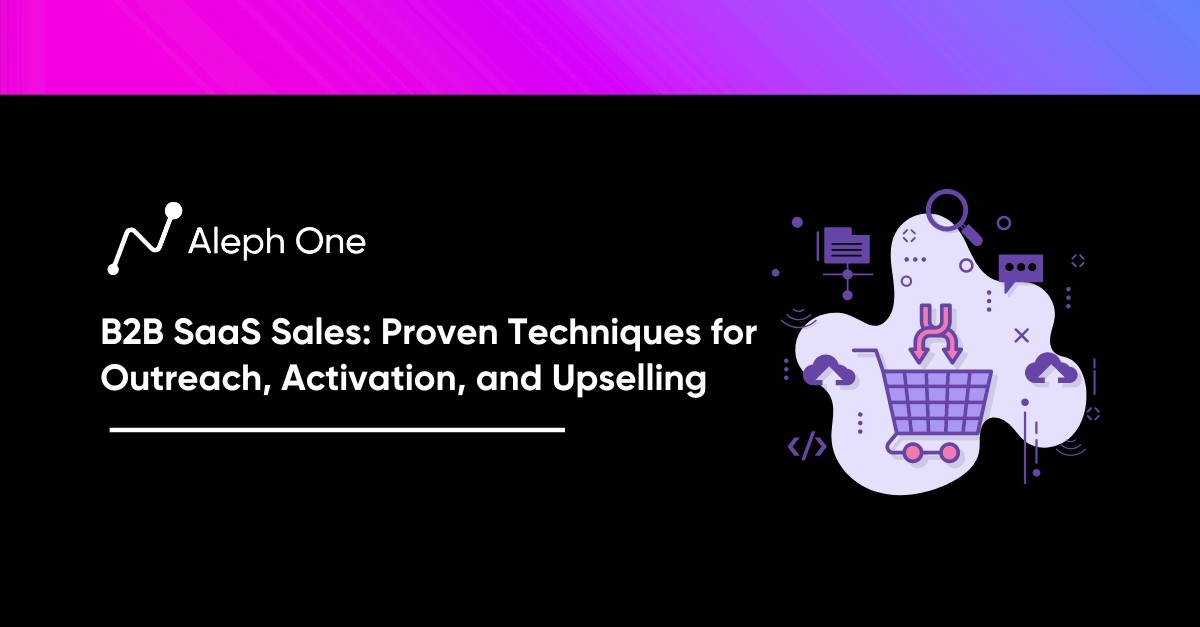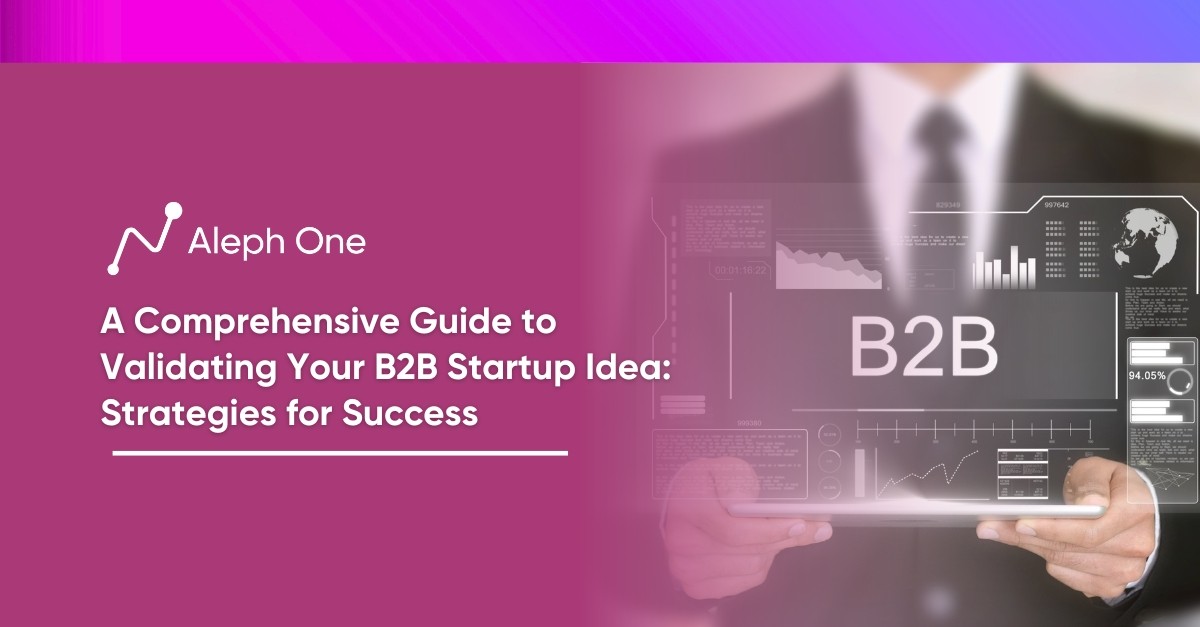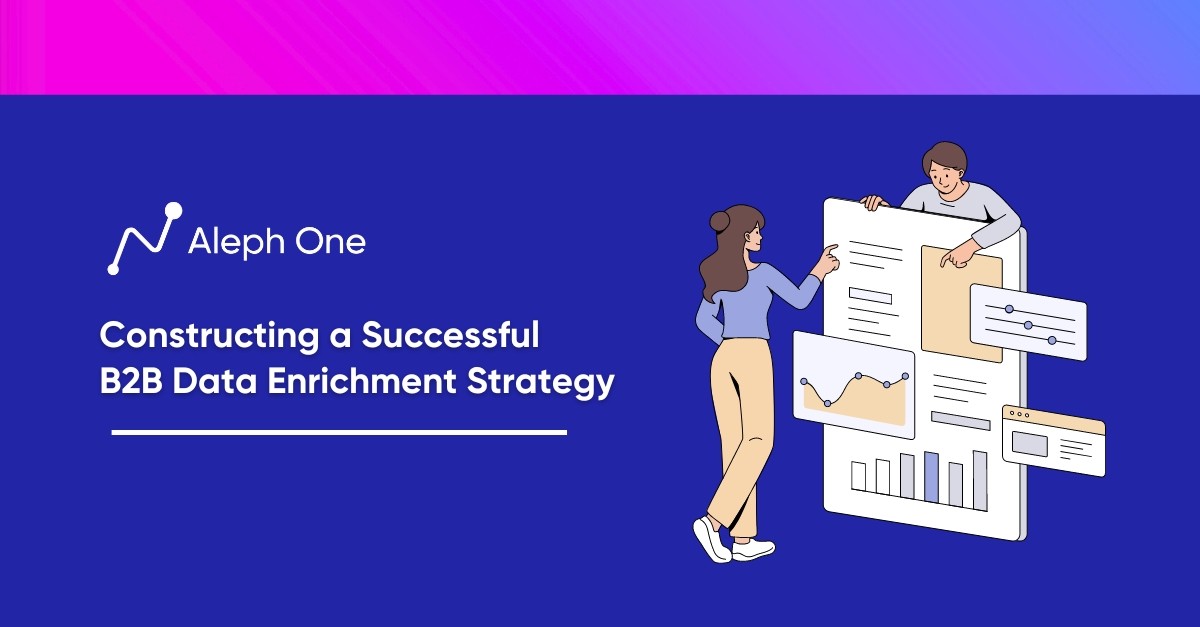Let’s work together to build something amazing. Share your project details and our team will reply to figure out the next steps to your success.

In B2B SaaS sales, success hinges on a multifaceted approach encompassing outreach, activation, and upselling. This article will go into proven techniques for B2B SaaS sales, offering insights into mapping the customer journey to enhance retention, growth hacking on a budget, and the art of upselling to amplify customer lifetime value. Furthermore, it explores the pivotal role of fostering a customer-centric company culture and the importance of tracking vital metrics and analytics to measure success in this industry.

Craft a Compelling Value Proposition: The Heart of Your B2B SaaS Sales
Your value proposition is the foundation for any B2B SaaS business. It articulates how your product solves customers’ most pressing problems and why they should buy from you. You must first identify your target customers and understand their key pain points to craft an effective value proposition. Conduct customer interviews and surveys to determine their challenges and needs. Look for common themes and points of frustration. These insights will help you shape a value proposition that resonates.
Be Specific on Benefits and Solutions
For example, if your target customers are sales teams struggling to manage complex sales processes, your value proposition could focus on streamlining their workflow and boosting productivity. You might say, “Our sales enablement platform takes the hassle out of managing your sales pipeline so you can focus on closing more deals.” The more specific you can be about your benefits and solutions, the better.
Startups Using Value Proposition
Your value proposition should be concise yet compelling. Some examples of strong B2B SaaS value propositions include:
- Slack: “Where workflows” – Communicate and collaborate with your team in one place.
- HubSpot: “Help your business grow better” – Attract, engage, and delight customers with an inbound experience.
- Zoom: “Flawless video, audio, and content sharing” – Hold high-quality video and audio conferences, webinars, and chat.
- Trello: “Organize anything, together” – Manage projects, organize tasks, and build team spirit. Get work done.
A compelling value proposition is a promise to your customers. It should convey your key differentiators and the specific problems you solve. For B2B SaaS companies, nailing your value proposition is worth the effort. It will become the heart of your sales and marketing strategies, helping you achieve success and scale.
Map the Customer Journey to Boost Retention
The customer journey for a B2B SaaS business typically spans 6-9 months on average. Optimizing the customer experience at each stage of this journey—from acquisition to onboarding to retention and expansion—is key to success. According to studies, businesses that excel at managing the customer journey experience customer lifetime values that are 50-100% higher.
Provide a Seamless Onboarding Experience
When a new customer signs up for your SaaS product, focus on providing a seamless onboarding experience. Welcome them, set up their account, and ensure they log in and use the product immediately. Provide resources like video tutorials, documentation, and live chat support to help them get started. The easier you make it for customers to onboard and adopt your solution, the more likely they will stick around long-term.
Build Lasting Relationships Customer Service and Success Management
After onboarding, work to build a long and lasting relationship with your customers through exceptional customer service and success management. Assign a Customer Success Manager (CSM) to check in regularly, see how customers use the product, and look for opportunities to provide more value. Your CSM should become a trusted advisor who can upsell and cross-sell when right.
Deliver Ongoing Value
To boost retention, focus on delivering ongoing value to your customers. Continue enhancing your product and service based on customer feedback. Send regular communications to engage your customers with content that educates them on gaining more value from your solution. And remember to show your appreciation for their business and loyalty.
Make Rewal and Expansion Contracts Easy
Make it easy for your customers to renew and expand their contracts with you. Reach out ahead of contract renewal dates to discuss their experience and see if they have any unmet needs you can address. Provide options for upgrading to higher-tiered plans and bundles that will save them money. The key is to simplify the renewal and upselling process while demonstrating the additional value they’ll gain by expanding their relationship with your company.
By optimizing the end-to-end customer journey, B2B SaaS businesses can boost customer satisfaction, increase retention, and gain a significant competitive advantage. Focusing on the customer experience at each stage—from acquisition to onboarding to retention and expansion—is the key to success.
Growth Hacking: How to Acquire Customers on a Budget
As a B2B SaaS startup, you likely have limited resources to invest in customer acquisition. Growth hacking is an innovative way to gain traction and new customers without breaking the bank. Growth hacking techniques leverage creativity, analytics, and low-cost strategies to accelerate growth.
Viral Marketing
One of the most effective growth hacking techniques is viral marketing. This means creating highly shareable content like blog posts, videos, infographics, and social media posts that spread organically. For example, an explainer video demonstrating how your product solves a key customer pain point can go viral, exposing your brand to thousands of potential new customers.
Referral Programs
Referral programs are another growth hack that leverages existing customers to gain new ones. Offer incentives like discounts, credits, or cash rewards when existing customers refer new ones. According to studies, referred customers have a 16% higher lifetime value. Referral programs are a win-win, rewarding your loyal customers for their advocacy.
Content Creation
Content creation is a tried-and-true growth hack. Developing valuable and relevant content like blog posts, videos, webinars, and whitepapers establishes your brand as an industry thought leader. This content also ranks in search engines, driving organic traffic and new leads. For example, a comprehensive guide on overcoming a key challenge for your target customers can gain thousands of views and drive many new signups.
Search Engine Optimization (SEO)
Search engine optimization (SEO) is a growth hack focused on optimizing your website and content to rank higher in search engines like Google. Conduct keyword research to determine terms your target customers are searching for, then optimize your pages and content around those keywords. As your rankings in search results improve, you’ll gain more organic traffic and leads.
With creativity and persistence, growth hacking techniques like viral marketing, referrals, content creation, and SEO can be highly effective for acquiring new B2B SaaS customers on a tight budget. Track the performance of each channel closely, then double down on what’s working to optimize your growth.
Upselling: How to Increase Customer Lifetime Value
Upselling existing customers is one of the most cost-effective ways to grow your B2B SaaS business. Your current customers already know, like, and trust your company, making them more likely to buy additional products and services. With upselling, you can boost customer lifetime value without the high cost of acquiring new customers.
Identify Upselling Opportunities
To identify upselling opportunities, analyze how your customers use your product and look for ways to benefit from premium features or higher-tier plans. You may also uncover needs for complementary products. Reach out to customers and discuss how your additional offerings could help them achieve their goals. Focus the conversation on the value to the customer, not just the features.
Craft Persuasive Offers
Craft persuasive yet honest offers demonstrating the concrete benefits and ROI of upgrading or adding on. Customers will only upsell if they believe it is in their best interest. You may need to educate them on how much value they can gain from your premium solutions.
Consultative Upselling Conversation
Have a consultative upselling conversation rather than a salesy pitch. Ask open-ended questions to understand your customers’ challenges and priorities. Explain how your upsell offer specifically addresses their needs. Provide social proof from other customers who have upgraded. Be willing to negotiate to find a solution for your customers’ budget and requirements.
Increase Customer Lifetime Value
With a strategic upselling program in place, B2B SaaS businesses have significantly increased customer lifetime value. For example, ClearSlide grew annual recurring revenue by 25% year over year by upselling enterprise customers to higher-tier plans. DocuSign found that customers who purchased multiple products had a 30% lower churn rate and generated 50-100% more revenue. An upselling focus provides a significant competitive advantage for any B2B SaaS company looking to scale.
Identify your best upselling opportunities, craft valuable offers, have a consultative conversation focused on the customer, provide social proof, and be willing to negotiate. With an effective upselling strategy, you can boost customer lifetime value and fuel the growth of your B2B SaaS business.
Building a Customer-Centric Company Culture
A customer-centric culture is essential for success in the B2B SaaS space. When your entire company is focused on understanding and meeting customer needs, you’ll achieve higher satisfaction, retention, and growth.
It starts at the top with leadership. Executives must prioritize customer centricity and set a vision for the company that revolves around the customer experience. They must empower all employees to make decisions that benefit the customer whenever possible.
Hiring and Training are Key
Recruit individuals with a customer service mindset, then train them on your products, customers, and business goals. Educate them on identifying customer needs, handling complaints, and exceeding expectations.
Product Design
Product design is another opportunity to build customer centricity. Continuously gather customer feedback and use it to improve your offerings. Release updates and new features based on what will provide the most value to customers. Make your products extremely user-friendly and intuitive.
Customer Success Team
Your customer success team plays an essential role in developing a customer-focused culture. They should serve as the voice of the customer internally and share insights with other departments. They need to forge genuine relationships with customers built on trust and understanding.
Zendesk and Salesforce
Zendesk and Salesforce are examples of highly customer-centric B2B SaaS companies. Zendesk gathers customer feedback at every touchpoint and empowers support agents to do whatever it takes to make customers happy. Salesforce has a passionate customer success team, provides in-depth customer education, and frequently seeks input for product enhancements.
A customer-centric culture leads to success. According to research from Bain & Company, customer-centric companies achieve 60% higher customer retention, 70% higher customer satisfaction, and 80% higher revenue growth compared to companies that are not focused on the customer experience. When your entire organization revolves around the customer, you’ll gain a sustainable competitive advantage.
SaaS Metrics and Analytics: How to Measure Success
For B2B SaaS businesses, data is king. Tracking key metrics and analyzing trends is essential to optimizing growth and success. Some of the most important metrics to monitor include:
Churn Rate
Your churn rate measures the percentage of customers who cancel their subscriptions over a given time period. A high churn rate means you’re losing customers faster than you’re acquiring them, threatening the viability of your business. Most B2B SaaS companies aim for a monthly churn rate of 5% or less.
Customer lifetime value (LTV)
Your LTV measures how much revenue you can expect from a customer over the lifetime of their relationship with your company. A higher LTV means you can spend more to acquire new customers. Successful B2B SaaS businesses often have an LTV 3-5 times higher than their customer acquisition cost.
Customer acquisition cost (CAC)
Your CAC measures how much you’re spending to acquire each new customer. A high CAC threatens profitability if it’s greater than your LTV. Aim for a CAC that’s no more than 1/3 of your LTV. Lowering CAC through optimization and growth hacking is key.
Monthly recurring revenue (MRR)
Your MRR measures how much revenue you generate from subscriptions each month. Growing MRR over time is a crucial indicator of the overall health and growth of your B2B SaaS business. Most companies aim for at least 10-15% monthly MRR growth.
Analyzing Trends
Analyzing trends in these metrics and optimizing based on insights is key to success. For example, if your churn rate spikes, you’ll want to investigate why customers cancel and make changes to improve retention. If your CAC needs to be lowered, focus on more cost-effective customer acquisition channels. If MRR growth slows, it may be time to revisit your upselling and expansion strategies.
Optimize Your Startup with Data-driven Insights
Leading B2B SaaS companies closely monitor their metrics and analytics. They optimize every area of their business based on data-driven insights, from product design to marketing to sales. By tracking key metrics, analyzing trends, and taking action, you can make strategic decisions that fuel sustainable growth. Measure, optimize, and repeat—the key to success in B2B SaaS.
FAQ
How do you ensure that your value proposition truly resonates with your target audience, beyond conducting customer interviews and surveys?
There are several strategies for ensuring your value proposition resonates with your target audience. First, use customer language. Incorporate phrases, terms, or jargon that your customers typically use into your value proposition. This will help them instantly connect with your messaging. Second, use data to back up your claims. Concrete facts or figures demonstrating how your product resolves key pain points can add credibility to your value proposition. Third, test different value propositions. Split testing different messaging on your website, in emails, and in ads can provide insights on what resonates the most.
Can you elaborate on the growth hacking techniques mentioned in the article and provide specific examples of their successful implementation?
Growth hacking often involves innovative strategies that use minimal resources to maximize growth. One example is Dropbox, which implemented a simple referral program. It offered extra storage space to users who referred friends and to the new users who signed up through a referral. This strategy greatly amplified their user base with minimal marketing spend. Another example is Airbnb, which used Craigslist’s user base to its advantage. When users posted a property on Airbnb, they had the option to post it to Craigslist as well, driving traffic from Craigslist back to Airbnb.
How do you build a customer-centric culture within a company, particularly in a remote environment?
Building a customer-centric culture, especially in a remote environment, requires intentional effort. Start by setting clear expectations that every team member’s role contributes to customer satisfaction. Regularly share customer feedback, both positive and negative, with all employees. Also, ensure your team has the right tools and platforms for effective customer relationship management, regardless of location. In a remote environment, it’s crucial to provide channels for customer feedback and to cultivate an atmosphere where each team member feels responsible for customer success. Regular virtual meetings dedicated to discussing customer concerns or brainstorming ways to enhance the customer experience can also be very effective.
Get the latest news and updates from Aleph One in your inbox.



